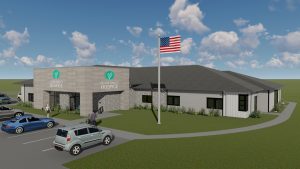Safety has always been on the forefront of our minds here at Cardinal Construction, but 2020 has brought us a whole new challenge. How do we keep our staff and clients healthy during the COVID-19 Pandemic? This is an especially important question when we are working in occupied spaces, where every interaction can increase the potential for spreading coronavirus.
Early on, we recognized the impact that COVID-19 could potentially have on our current and future projects, both in terms of maintaining a healthy workforce and safe jobsites, along with the potential issues for material procurement and subcontractor labor. Cardinal made the decision to require masks to be worn in our office and at all of our jobsites to help limit potential exposure. Many of our job progress meetings and internal meetings switched to a virtual platform to allow us to safely continue the open lines of communication with our clients and subcontractors.
Beyond these overarching changes to our daily operations, each project has specific considerations and sometimes even owner or government regulated COVID-19 processes that we need to follow. This is especially true when we are working in spaces occupied by patients or residents. It is our duty to create safe and effective COVID-19 mitigation plans. This planning considers matters such as the creation of temporary physical barriers, on-boarding for all staff and subcontractors that are coming to the jobsite, project phasing and logistical plans for moving patients or residents who are occupying an area that we require access to, and contingency plans for potential building lockdowns and staff or subcontractor shortages due to widespread exposure and subsequent quarantine.
In order to have successful projects during this unprecedented time, it really comes down to two key things: communication and planning. Creating open and honest lines of communication with owners and their representatives keeps everyone informed and unified as the project progresses from design to completion. Planning internally, with subcontractors, and with owners means we’re prepared for all of the potential issues that could impact the schedule and project finances and doing our best to stay ahead of those issues to keep the project on track. As we come to the end of 2020 and COVID-19 is still very much affecting our communities, we take the lessons that we have learned this year into 2021 and we know that with proper planning and communication, construction projects can continue to be successful and working together we can all continue to grow.


